| Botanical Name |
|
| Family |
Rubiaceae - The gardenia and coffee family. |
| Pronunciation |
puh-VET-tuh re-vo-LOO-tuh |
| Common Name(s) |
English: Dune bride's bush
Afrikaans: Duinebruidsbos
|
| Plant Group |
- Shrub A woody plant of relatively low height, having several stems arising from the base and lacking a single trunk; a bush.
|
| Plant Size |
- Medium
| Tree | 10m to 16m |
| Shrub | 1m to 2m |
| Perennial/ground cover | 40cm to 60cm |
| Bulb | 40cm to 60cm |
| Succulent | 40cm to 60cm |
|
| Position |
- Canopy Shade Canopy shade is found below closely grown trees where some light filters through. Ideal for the protection of herbaceous plants.
- Deep / Full Shade Shade below spreading evergreen trees where sun's rays are unable to penetrate the canopy at any time. For light sensitive plants
- Light or Dappled Shade Found below trees with sparse, open foliage. Ideal for the protection of herbaceous plants.
|
| General Information |
- Drought Tolerance: High The plant is well adapted to arid conditions; it can survive long periods of drought and high temperatures without extra water.
- Evergreen Plants that have leaves all year round.
- Frost: Tender A plant that will not survive any frost or low winter temperatures.
- Water Wise Plant species originating from low rainfall regions that require less water to survive and thrive than other plant species.
|
| Specific Information |
Although in some areas Pavetta revoluta is a shrub or small tree, I have observed it in the area around Bathurst only as a scrambling shrub growing deep within hedgerows and easily missed unless in bloom. It has dark green leathery leaves, beautiful flowers and fat, shiny black fruits that attract birds as soon as they ripen.
I have tried potting it and pruning it to shape both in the pot and in the garden but it has not responded well and seems best left to its natural growth inclination. Note that this is only my experience with Pavetta revoluta and it may well be that the plant simply does not thrive in the particular soil or habitat in my garden.
|
| Ad Break |
|
| Flowers |
| Description |
small tubular flowers in a dense cluster about 75 mm in diamater
|
| Season |
- Spring Plants will seldom bloom for the entire season as given in the list, but should flower during a period within these parameters.
|
| Colour |
|
| Growth Rate |
- Slow to Moderate Specifying growth rate can be very misleading as there is considerable variation of growth rate depending on type and species of plant, available water, supplementary feeding, mulching and general care, as well as the plants suitability and adaptability to the garden environment.
|
| Plant Uses |
- Attracts bees, butterflies or other insects This plant attracts insects which can be food for birds or other creatures in your garden.
- Attracts Birds This plant will attract birds.
- Border A strip of ground, at the edge of a driveway or path in which ornamental plants or shrubs are planted.
- Boundary A plant useful for planting around the edges of the property to form a green or colourful backdrop, an impenetrable hedge, to hide walls or create privacy.
- Filler Either a fast growing tree or shrub used temporarily to fill in an area while the permanent plants grow to a desired size, or a plant used to fill gaps in borders or beds.
- Wild Garden An indigenous garden planted for the benefit of wildlife and birds. Provides food, water, a variety of mini-biomes and no poisonous chemicals are used.
|
| Distribution and Habitat |
Pavetta revoluta occurs from Port Alfred in the Eastern Cape to KwaZulu-Natal, in forest and dune bush. It is found only along a narrow strip along the coast, not far from the sea. It grows in a dwarf form on the sea shore.
|
| Planting Suggestions |
Plant in a hole with a mix of compost, well rotted manure and a little bone-meal. Mulch well and water regularly during the first year or two for optimum growth. This is a shade loving plant.
|
| Medicinal Uses |
It is reported that the Xhosa people use Pavetta revoluta for rheumatism and as an emetic insecticide, presumably worms.
|
| Ad Break |
|


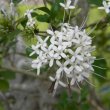
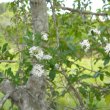
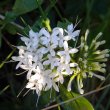
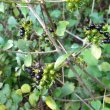
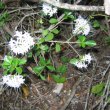
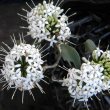


Comments
Pavetta Revoluta
Your website is a treasure house and ought to be available as an app for Apple devices! I saw a large number of Pavetta revolutas in bloom during August on a visit to North Park, a KZN reserve in Durban. They had the form of shrubs and were scattered about the reserve in shady light-filtered areas.
Pavetta revoluta in KZN
Hi Adam
Thanks for your comment.
Interesting how flowering times differ from place to place. In Bathurst the Pavetta revolutas only start flowering towards December. They seem have a very sprawling habit, seldom with any particular shape. The moist climate of KZN must really agree with them. The flowers are so very clean and neat. Did you perhaps take any pictures?
My web gurus are planning on upgrading my site so that it can be read on small devices but it will be a while before it is done. I must admit Apple hadn't even crossed my mind. Thanks for the suggestion.
Kind regards
Lorraine
Pavetta revolut
Further to my earlier e-mail, I want to correct the date of my seeing the plant in bloom. It was in fact on 18/12/2011.
Pavetta revoluta flowering time
Thanks for the correction Adam. It did seem a bit out of character for this plant.
Regards
Lorraine
Discuss this plant
Share knowledge, ask a question or give an experience.